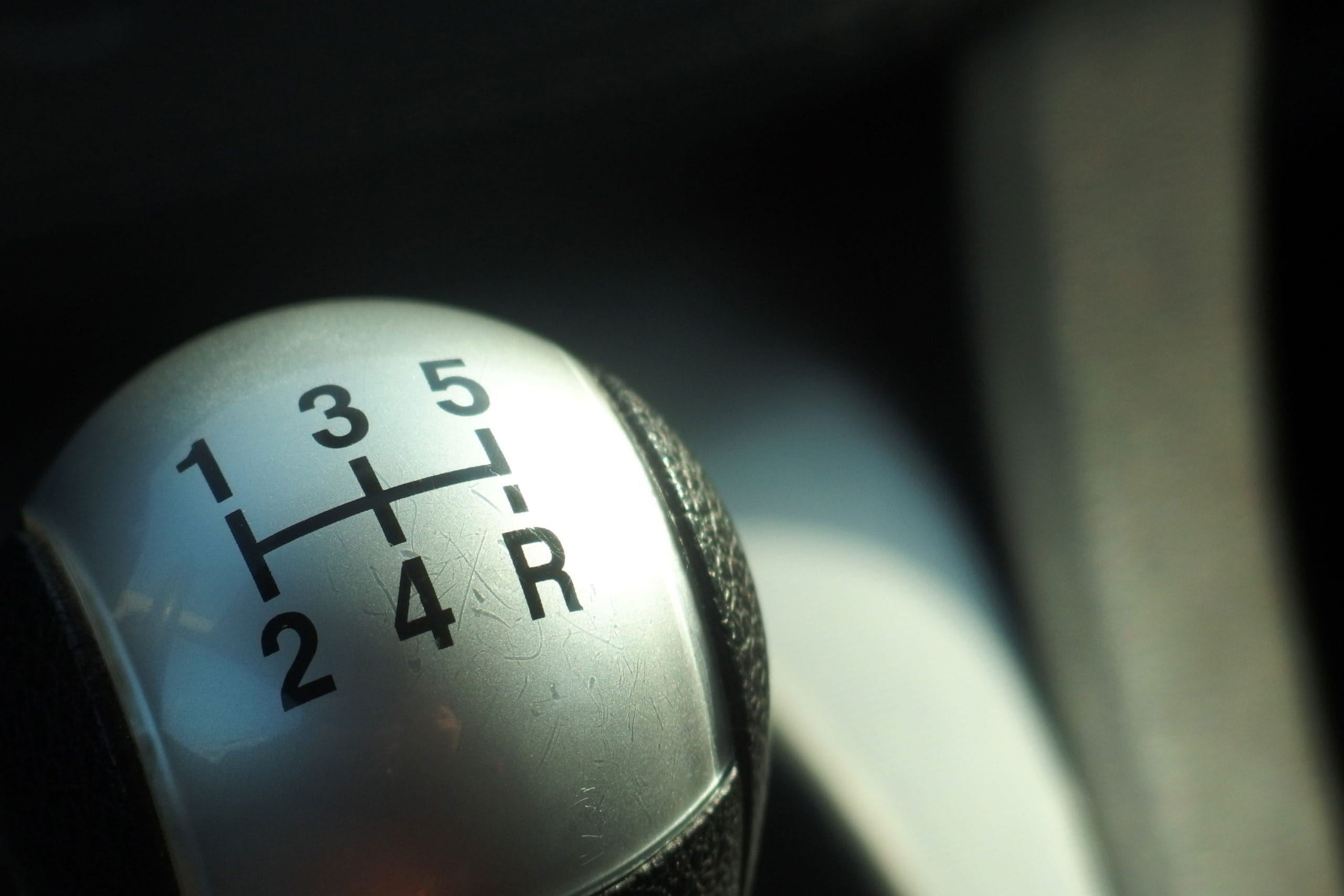Having car trouble? A faulty gearbox can be a minor annoyance or a major breakdown (and a hefty repair bill!). This guide helps you spot the warning signs early, saving you money and keeping your car running smoothly. We’ll cover everything from strange noises and clunky shifting to leaks and burning smells, explaining what they mean and why you shouldn’t ignore them.
Spotting the Red Flags
Overlooking the subtle signs of a failing gearbox is easy, but early detection can prevent costly repairs. While these aren’t definitive diagnoses, they warrant further investigation if you notice them. Concerned about your car’s transmission? Check out our guide on signs of warped rotors as well, just in case there’s more going on.
Leaks: Don’t Ignore the Drips
A reddish-brown fluid puddle under your car? That’s transmission fluid, not motor oil. Even a minor drip suggests a leak, potentially within the gearbox system. Similar to a leaky faucet, a small drip can escalate, so address it promptly.
Shifting Struggles: When Smooth Becomes a Grind
A healthy gearbox shifts seamlessly. Manual drivers: Difficulty engaging gears, grinding during shifts, or gears popping out unexpectedly suggest a problem. Automatic drivers: note slipping between gears, hesitant or harsh shifts, or difficulty shifting out of a lower gear. These could indicate underlying transmission issues.
Strange Sounds: Listening for Trouble
Your gearbox shouldn’t sound like a rock concert. Whining, humming, clunking, or grinding, especially when accelerating or decelerating, are concerning. These likely suggest worn gears, damaged bearings, or other internal issues. While some noises may be minor, a mechanic’s check is always wise.
Burning Smell: More Than Just Brakes
A burning smell from your car is never good. While it could indicate various issues, it often accompanies overheating transmission fluid, a serious sign of gearbox trouble. Heat can degrade the fluid, reducing lubrication and causing damage. If you notice this, pull over and have your car towed to prevent further damage. A burning smell from your shower? It could be unrelated; check out our article on shower drain smells but not clogged for potential solutions.
Dashboard Lights: Your Car’s Communication System
The check engine light isn’t always specific, but it can sometimes indicate a transmission problem, especially alongside other symptoms. Some cars have dedicated transmission warning lights. Ignoring these is risky; a diagnostic scan can pinpoint the issue.
Performance Problems: Sluggish and Inefficient
A faulty gearbox can impact performance. Decreased fuel efficiency, sluggish acceleration, or reduced power might occur because a damaged gearbox struggles to transfer power efficiently. While these symptoms might have other causes, consider the gearbox, especially with other signs present.
Shaking and Jerking: A Rough Ride
Excessive shaking, jerking, or grinding, especially when shifting, often indicates serious gearbox issues. Worn gears, damaged synchronizers, or other internal problems could be responsible. Don’t ignore these; they can worsen and cause more damage.
Overheating: A Recipe for Disaster
Like an engine, a gearbox can overheat, causing severe damage. Low fluid levels, worn components, or excessive strain contribute to overheating. This is critical and should be addressed immediately. Continuing to drive with an overheated transmission risks catastrophic failure.
Preventative Care: Extending Your Gearbox’s Life
Regular maintenance is key. Check transmission fluid regularly and change it as recommended. Avoid aggressive driving—rapid acceleration and harsh shifting strain the transmission. Preventative care extends your gearbox’s lifespan.
Professional Help: When to Call the Experts
If you notice any of these signs, consult a qualified mechanic. Early diagnosis and repair prevent further damage and potentially significant costs. DIY gearbox repairs are risky and could worsen the issue.
Decoding Gearbox Distress: A Deeper Dive
Your gearbox is a complex system. How can you tell if it’s failing? Here are some key indicators:
Sounds of Trouble: From Whispers to Screams
Unusual noises are red flags. A subtle whirring might suggest worn gears or bearings. Louder grinding, clunking, or banging indicate significant damage. The timing matters. Do they occur during acceleration, deceleration, shifting, or constantly? This information helps mechanics diagnose the problem.
Leaks and Lights: Don’t Dismiss Them
Fluid leaks are concerning. Finding automatic transmission fluid (reddish) or manual transmission fluid (oil) under your car demands attention. Similarly, don’t ignore the check engine light. It can indicate transmission problems; get the code read promptly.
Shifting Problems: Feeling Out of Sync
Shifting should be smooth. Difficulty engaging gears (manual), grinding, slipping, hesitation, sluggishness, shaking, or jerking (automatic) all suggest potential gearbox issues. These aren’t just inconveniences; they require attention.
The Smell of Trouble: Burning and Acrid
A burning smell, especially with other symptoms, often indicates overheating transmission fluid, likely caused by low fluid levels or internal damage. Overheated fluid loses lubricating properties, increasing friction and wear. Pull over immediately if you notice this smell.
Preventative Maintenance: Keeping Your Gearbox Happy
Regular maintenance is essential. Checking your transmission fluid’s level and condition is crucial. Fresh fluid is translucent red (automatic) or darker oil (manual). Murky, brown, or burnt-smelling fluid needs changing. Use the correct fluid type to avoid damage. Avoid harsh driving to extend your gearbox’s life.
Professional Expertise: When to Seek Help
While fluid checks are DIY-friendly, most gearbox work requires a qualified mechanic with the right tools and knowledge. Don’t attempt DIY repairs unless you’re experienced. Early professional diagnosis can prevent more costly issues later.
Clutch or Gearbox? Pinpointing the Problem
Let’s explore how to determine if your clutch or gearbox needs attention.
Clutch Calamities: Identifying the Issues
A struggling clutch can mean trouble. Difficulty shifting (like arm-wrestling a gorilla), grinding gears, a burning smell, a spongy or sticking clutch pedal, and a pedal stuck to the floor all indicate potential clutch problems.
Gearbox Groans: Understanding the Signs
A failing gearbox has telltale signs. Unusual noises (whining, humming, clunking), difficulty shifting (especially with grinding or crunching), and gears popping out unexpectedly require immediate attention.
Fluid Matters: The Importance of Lubrication
Both manual and automatic transmissions rely on fluid for lubrication and cooling. Low levels cause friction, overheating, and component failure. Regularly check your transmission fluid. Leaks warrant investigation.
DIY Checks: Preliminary Assessments
While professional diagnosis is essential, you can perform some basic checks:
- Visual Inspection: Look for leaks under your car, noting the fluid’s color and location.
- Sound Check: Listen for unusual noises from the transmission area, noting changes with speed or gear selection.
- Feel the Feedback: Note changes in your clutch pedal’s feel and any shifting difficulties.
Expert Advice: When to Call a Mechanic
DIY checks are helpful, but professional diagnosis is essential for complex issues. Consult a qualified mechanic if you notice any warning signs. Early diagnosis can prevent more costly repairs.
Testing Your Gearbox: A Practical Guide
Here’s how to check your gearbox for potential problems:
Manual Gearbox Testing: Hands-On Approach
- Check for Leaks: Look for fluid puddles under your car.
- Clutch Fluid Check: Ensure the reservoir isn’t low.
- Feel the Clutch: Check for slipping or grinding.
- Shifting Through Gears: Test all gears (with the engine running and parking brake on) for smooth operation.
- Listen Carefully: Listen for unusual noises while driving.
Automatic Gearbox Testing: A Different Approach
- Transmission Fluid Inspection: Check the fluid’s color and smell (burnt indicates problems).
- Dashboard Warning Lights: Note any warning lights.
- Shifting Smoothness: Pay attention to any hesitation, jerking, or delays.
- Unusual Noises: Listen for clunking, whining, or grinding.
Warning Signs: A Quick Reference
| Symptom | Likely Problem |
|---|---|
| Leaking fluids | Seals, gaskets |
| Dashboard warning lights | Various transmission issues |
| Grinding, clunking, whining | Gears, bearings, synchronizers |
| Difficulty shifting | Clutch, shift linkage, internal mechanisms |
| Slipping gears | Clutch, bands, clutches |
| Jerking, hesitation | Solenoids, sensors, internal mechanisms |
| Burning smell | Overheating transmission fluid |
| Rumbling in neutral | Bearings, internal damage |
| Loss of power/Overheating | Severe internal issues |
Preventative Care: Keeping it Running Smoothly
Regular fluid changes (using the correct fluid), avoiding harsh shifting, and periodic inspections prevent major problems. Catching small issues early saves money.
Some diagnostics are best left to professionals. Consult a qualified mechanic if you’re unsure about anything. They have the tools and expertise for accurate diagnosis and recommendations. Ongoing research in automotive technology may lead to evolving understanding of transmission issues. Remember, preventative maintenance can significantly extend your gearbox’s life.
- Unlock Elemental 2 Secrets: Actionable Insights Now - April 2, 2025
- Lot’s Wife’s Name: Unveiling the Mystery of Sodom’s Fall - April 2, 2025
- Photocell Sensors: A Complete Guide for Selection and Implementation - April 2, 2025

















1 thought on “Is Your Gearbox Failing? Recognizing the Warning Signs Before It’s Too Late”
Comments are closed.